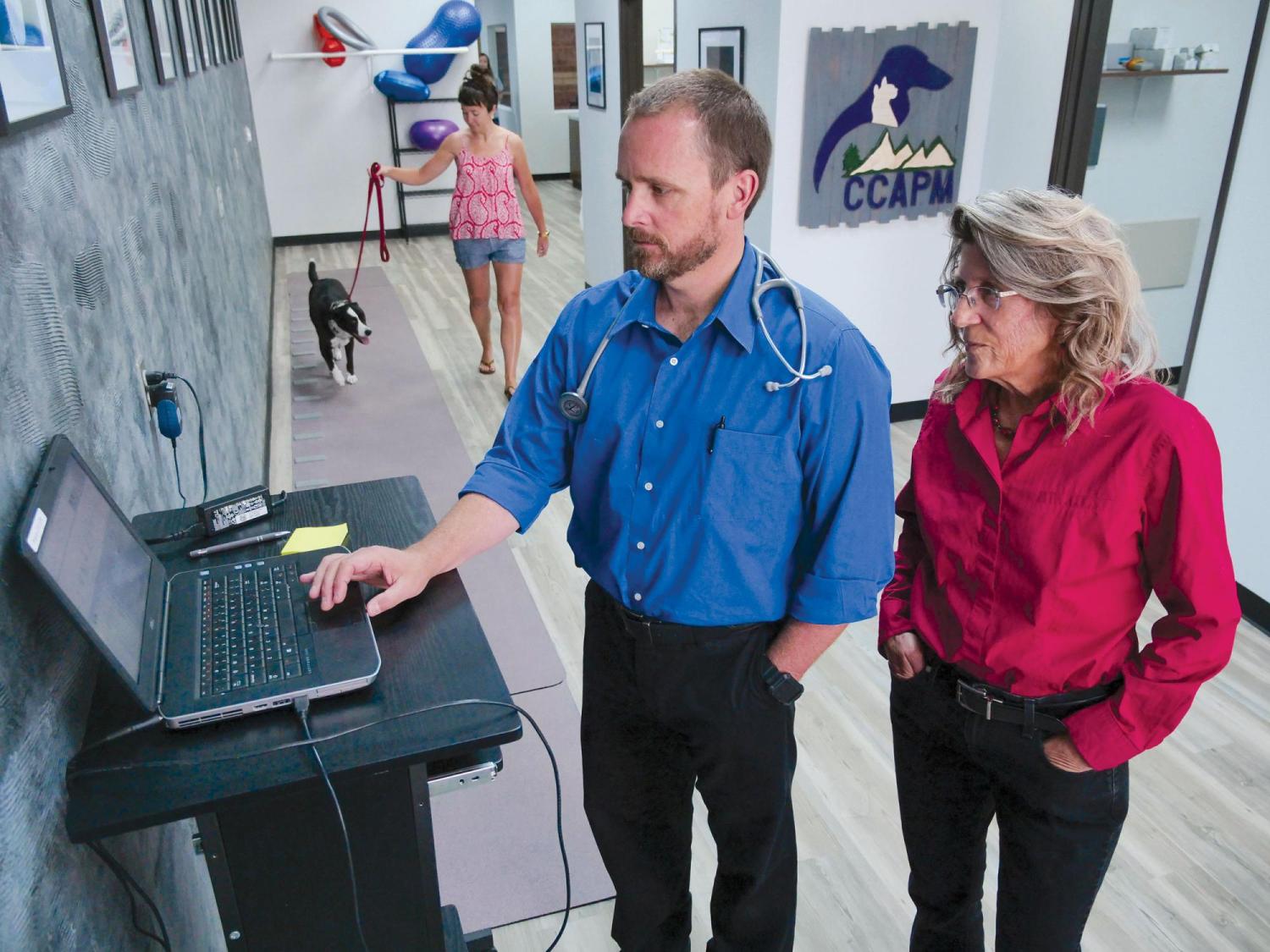Wagging tails signal good news for chronic pain therapy
When Shane the therapy dog was hit by a Jeep, life changed for him and his guardian, Taryn Sargent.
The cartilage of Shane’s left shoulder was torn. Arthritis and significant scar tissue set in. Despite surgery, acupuncture and several medications, the vibrant border collie who kept watch over Sargent on long walks transformed into a fragile pet who needed extensive care.
“Sometimes he would just stop walking and I’d have to carry him home,” recalls Sargent, whose epileptic seizures increased markedly as Shane became unable to accompany her for long daily walks. “It was a struggle to see him in that much pain.”
Today, 10-year-old Shane has dramatically reduced pain and dependency on medications, and is bounding around like a puppy again, 18 months after receiving a single injection of an experimental gene therapy developed by CU Boulder neuroscientist Linda Watkins.
Thirty years in the making, the opioid-free, long-lasting shot has been used in more than 40 dogs with impressive results, and ultimately Watkins believes it could play an important role in addressing the nation’s chronic pain epidemic. This summer, biotech startup Xalud Therapeutics, which she co-founded, launched its first human study in Australia. Another clinical trial in California is in the works.


“The impact on pets, their guardians and people with chronic pain could be huge,” Watkins says.
Watkins’ journey began in the 1980s, when, as a new hire in the Department of Psychology and Neuroscience, she began to rock the boat in the field of pain research.
Conventional wisdom held that neurons were the key messengers for pain, so most medications targeted them. But Watkins proposed that then-little-understood glial cells might be the culprit in chronic pain. Glial cells are immune cells in the brain and spinal cord that make us achy when we’re sick so we can rest and get better. What if that ancient survival circuitry somehow got stuck in overdrive, leading to chronic pain? “The whole field was like, ‘What on earth is she talking about?’”
Watkins and her students hunkered down in the lab, ultimately discovering that activated glial cells produced inflammatory compounds that drive pain. They also learned that, after the initial sickness or injury faded, the cells produced a compound called interleukin 10 (IL-10) to dampen the process they’d started.
“IL-10 is Mother Nature’s anti-inflammatory,” she says.
Over the years, she and her team experimented with a host of strategies to boost IL-10. They persisted and, in 2009, Watkins co-founded Xalud Therapeutics. Their technology: an injection near the spinal cord or the site of an inflamed joint that delivers circles of DNA in a sugar/saline solution to cells, instructing them to ramp up IL-10 production.
With help from the university’s Technology Transfer Office—which has provided intellectual property support, assistance with licensing agreements, and help obtaining a $100,000 research grant in 2018—Watkins is edging closer to bringing her idea to clinical practice.
After serendipitously meeting veterinarian Dr. Rob Landry at a pain conference in 2011, they teamed up to launch a clinical IL-10 research study in dogs. Landry owns and operates the Colorado Center for Animal Pain Management in Westminster, and specializes in veterinary pain medicine and rehabilitation for companion animals.
The new research grant is allowing Watkins and Landry to continue their chronic pain studies in dogs. The ongoing funding is also helping dogs with osteoarthritis to be placed into the project at no cost to their owners.
“They’re happier, more engaged, more active, and they’re playing again,” Landry says as he kneels down to scratch Shane’s belly after giving him a clean bill of health.
Because the treatment is so localized and prompts the body’s own pain-killing response, it lacks the myriad side effects associated with opioids—including dependency and constipation—and it can last for many months.
Ultimately, that could make it an attractive option for people with neuropathic pain or arthritis.
As Watkins puts it: “It could be a game-changer.”
Principal investigator
Linda Watkins
Funding
University of Colorado Boulder; The MayDay Fund; National Institutes of Health
Collaboration + support
Psychology and Neuroscience; Technology Transfer Office; Colorado Center for Animal Pain Management; Xalud Therapeutics

